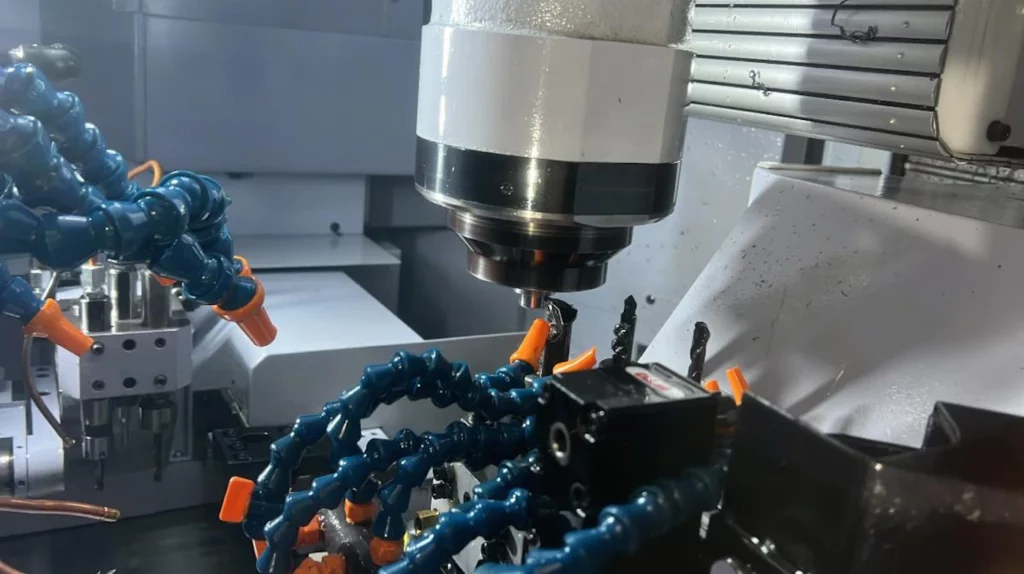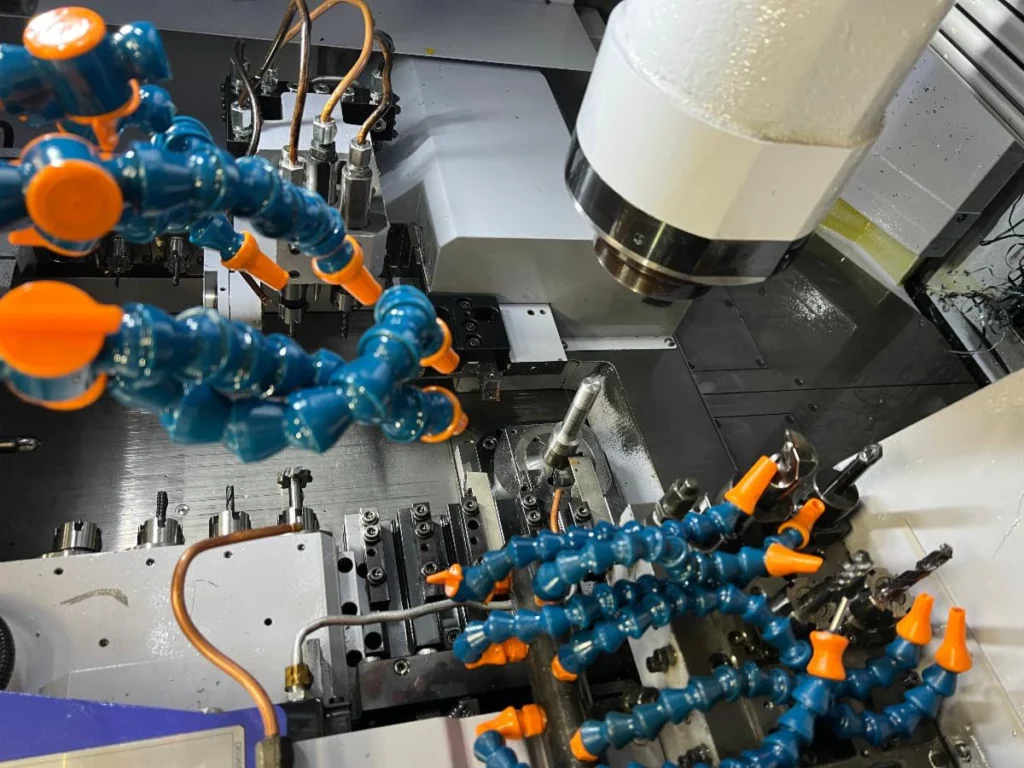The Switch to Swiss: Why are Manufacturers Swapping out Traditional CNC Turning Machines for Swiss Lathes?
Elizabeth Ruiz
Posted on 9/20/23
Why are companies moving toward Swiss lathes?
Manufacturing organizations are making a change from standard CNC type lathing and milling machines to newer Swiss-style lathes for the production of high-quality parts in large volumes. What are the reasons for the switch?
Traditional CNC lathing and milling machines can involve four different setup processes requiring more than one crew member to run, while the more compact and faster Swiss style machines allow operators to process the entire part in one operation. They have lower cycle times and contain all tolerances in one machine, so it is more accurate than moving parts from machine to machine.
Companies are moving towards this type of machine because they can lower cost significantly, cut down on handling and labor, reduce operator error, and reduce overall production time.

What is a Swiss lathe?
So, how do they work? Let’s take a look at some of the components.
- Sliding headstock: The main difference between standard CNC type machines and Swiss is a fixed vs. sliding headstock. The Swiss-style machine’s sliding headstock feeds the bar stock through a guide bushing in the z-axis past the stationary cutting tool. The cutting tool always places the bar stock close to the bushing so it is well supported and vibration and deflection are reduced.
- Sub-spindle: Included in some Swiss-style machines for operations such as drilling and boring. This avoids having to move the part from machine to machine.
- Guide bushing and spindle: These components create the ability to hold tighter tolerances than traditional turning machines. Spindles that don’t rely on belt drives usually create less vibration and are more stable and precise.
- Guiding surfaces: As smooth and flat as possible to reduce vibration and improve stability.
- Large, heavy-duty ball screws are in each axis to efficiently transfer power from the motor to the headstock.
What are the benefits?
Now let’s explore some of the benefits of working with Swiss-style lathes.
- Mass produces small parts quickly, easily, and accurately.
- Holds long, thin pieces to higher tolerances.
- Enables hard turning when needed.
- Performing milling and turning work simultaneously allows for versatile part processing.
- Performs operations of a traditional machine in one setup.
- Lowers overall production time.
- Lowers costs.
- Reduces labor requirements, allowing operators to work with more than one machine and perform multiple jobs at once.
- Reduces operator error.
How do we maintain Swiss-style lathes?
What are the best ways to maintain these efficient machines? Here are some tips:
- An expert craftsperson should hand-scrape the surface instead of a power-scraping device—the craftspeople are more precise.
- Check surface finish specs on the equipment drawing.
- Train personnel on how to use the new machines.
- Measure each bar before installing to reveal any diameter deviations.
- Know the difference between headstock collet and guide bushing.
- Be careful when offsetting tools, because one tool may be used for multiple operations.
- Be aware of the workpiece material because some materials are harder on tools than others.
- Monitor coolant lines to ensure it is directed to the right location and the chips are evacuated properly.

How do we accelerate production?
There are ways to optimize production when using a Swiss-style turning machine.
- Use an automatic bar feeder. This makes continuous, unattended (overnight) operation possible. It also reduces vibration and increases safety for operators, protecting them from rapidly rotating exposed bar stock.
- Live tooling and CAM systems.
- Reduce the number of variables in processes.
- Use high lubricity, low viscosity, non-foaming cutting oils with high flashpoints that are compatible with high-pressure operations.
- Backend tooling with B-axis tooling on both spindles.
- Well-maintained chip conveyors and coolant management systems.
Although Swiss lathes aren’t perfect, with potential issues including frequent downtime for maintenance, part consistency issues, and cost creep, the positives outweigh the negatives in terms of overall production, overall cost savings, safety, and efficient use of operators’ time.
If your organization is considering the installation of Swiss style lathes, ensure bill of materials (BOMs), technical information, spare parts, training, and procedures, are in place before use. Set up the new equipment properly in the CMMS and add all relevant information to the technical database for future reference.
Don’t forget to develop the reliability and maintenance strategy for the new equipment and spare parts management.

Midweek with Maintenance World
Looking for a midweek break? Keep up with the latest news brought to you every Wednesday by the Maintenance World crew.
Related Articles

Cardinal Manufacturing, Helping to Bridge the Manufacturing Skills Gap

South Carolina Ranked as the #1 State for Manufacturing

The Decade of American Reshoring
Lost Radioactive Capsule Proves Preventive Maintenance is as Important as Ever

HBD Condition Monitoring Devices at the center of Ohio Derailment

Failure Analysis Uncovers the Cause of the Keystone Oil Spill




